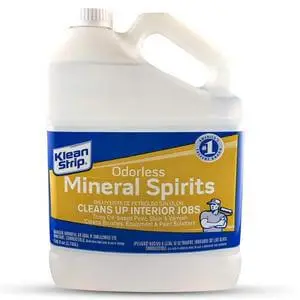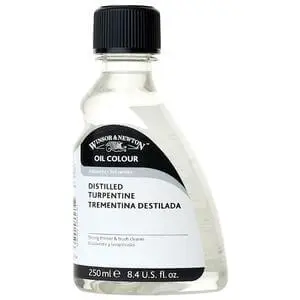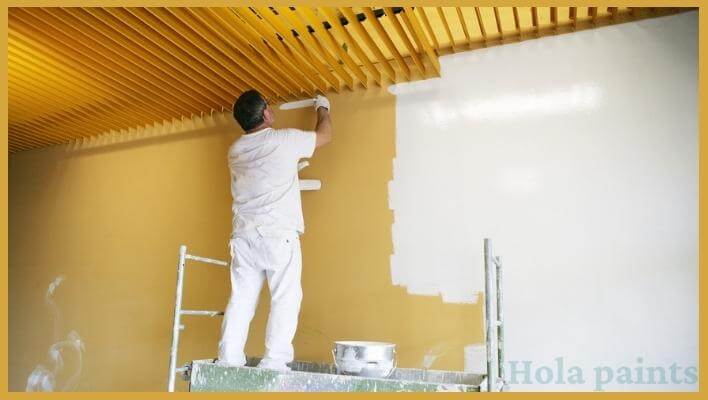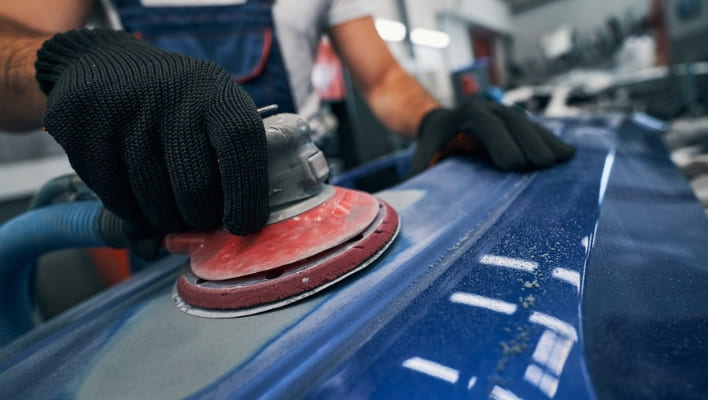Are you worried about the paint spots or extra paint marks on something you want to remove? Don’t worry! You will come across several paint removal and solvents which can perform knotty cleanup jobs. Nonetheless, people still remain puzzled about Mineral Spirits vs. Turpentine. In my opinion, both are famous and good options in terms of effectiveness but knowing the details of each one is compulsory.
In fact, it’s a daunting task to pick up the best mineral turps. I’m sharing my personal experience with the mineral spirits to make your selection a breeze. I’ve been using both solutions for years, but still, there is a difference between both solutions. This guide will not only tell you which is the best but it will also deliver all the necessary details about Mineral spirits and Turpentine.
This detailed guide will address the difference between mineral spirits and turpentine, mineral turpentine uses, odorless mineral spirits, white spirits, and everything about mineral spirits to remove paint. Let’s get deeper into the details!
Table of Contents
- Main Differences between Mineral Spirits VS Turpentine (Quick Summary)
- What Are Mineral Spirits?
- Advantages of Mineral Spirits
- Disadvantages of Mineral Spirits
- What Is Turpentine?
- Advantages of Turpentine
- Disadvantages of Turpentine
- Uses Of Mineral Spirits vs. Turpentine
- Mineral Spirits vs. Turpentine: Similarities
- Thinning Paints
- Cleaning and Degreasing
- Cleaning of The Paint Tools
- Remove Paint
- Others
- Mineral Spirits vs. Turpentine: Dissimilarities
- Odor
- Residue
- Evaporation
- Others
- What is the difference between paint thinner, turpentine and mineral spirits?
- Mineral Spirits vs Turpentine vs Paint Thinner
- Mineral Spirits vs Turpentine For Oil Painting
- Can I use mineral spirits instead of turpentine for oil painting?
- Methylated Spirits vs Turpentine
- FAQs On Mineral Spirits vs. Turpentine
- What Are Mineral Spirits Used For?
- Is turpentine and mineral spirits the same thing?
- Can I substitute mineral spirits for turpentine?
- Final Words On Mineral Spirits vs. Turpentine
Main Differences between Mineral Spirits VS Turpentine (Quick Summary)
| Mineral Spirits | Turpentine |
| It has low odor | It has strong odor |
| It takes time to dry | Evaporates faster, paint dries faster |
| Oily residues are left behind | The sprayer is easier to clean because there are no residues |
| Environmentally Unfriendly | Compared to petroleum-based solvents, turpentine is less toxic. |
What Are Mineral Spirits?

Mineral spirits are most used and well-known solvents. They are extracted from petroleum and are clear like water. People use them in variety of paint thinning applications, and they are also sometimes called paint thinners.
Another reason for wide usage is their affordability. Anyone can get them in large quantities for a small amount of money.
According to Wikipedia, Mineral spirits are very strong solvents and are usually oil-based. Due to the advantages mentioned above, mineral spirits are frequently used to thin paint. On the other hand, they are also used as dilute glue and adhesives.
Besides all, I have noticed some significant drawbacks, such as streaky residue. It happens due to the use of oil in mineral spirits. Therefore, they are only used at places where you don’t have any concern with the oil streakiness.
Check out the substitute of mineral spirits.
Advantages of Mineral Spirits
- They are highly affordable.
- They are stronger adhesives.
- They are pure organic compounds.
Disadvantages of Mineral Spirits
- Most of the time, they leave an oily residue on the surface.
What Is Turpentine?

Turpentine is a pure solvent, and the producers get it from pine trees. Undoubtedly, it’s not very potent but still liked by most people. Then what can turpentine be used for?
It acts as a solvent for water-based paints. Unlike mineral spirits, it does not leave residue behind. Due to its chemical properties, it is frequently used for light paint removal, cleaning agent, and degreasing.
It’s compulsory to note that turpentine is a toxic substance. Therefore, I always recommend you take all the precautions before using it.
It’s a good cleaner for many household applications to clear all the residue.
Advantages of Turpentine
- It’s a very effective substance for water-based paints.
- No oily residue is left behind
- In addition to cleaning, it is used to thin oil-based paints
Disadvantages of Turpentine
- It’s a toxic compound.
- The effectiveness is less than mineral spirits.
Uses Of Mineral Spirits vs. Turpentine
| Mineral Spirits | Turpentine |
| It uses to thin paint | Thins paint |
| It removes fresh paint spills | It is suitable for removing slightly dried paint spills |
| Cleaner and degreasing agent | Cleaner and degreasing agent |
Note: It is recommended that you use an automotive lacquer thinner to clean your paint sprayer. This product is designed specifically for cleaning spray guns.
Mineral Spirits vs. Turpentine: Similarities
Many people ask: Is Mineral Spirits the same as Turpentine? I can’t answer it in a single word because of the different chemical properties and applications. Both turpentine vs mineral spirits are solvents used for thinning paints; therefore, they bring some similarities mentioned in the following:
Thinning Paints
Mineral spirits and turpentine are frequently used to thin different paints. Remember that they don’t think of the same types of paints but different ones only. I’ll explain this fact in the coming dissimilarities section. They don’t change the chemical properties of paint but only act as paint thinners.
Cleaning and Degreasing
As a painter, most of the time, I need to clean the already painted surfaces. Likewise, a degreasing surface is also crucial for a uniform paint finish. Mineral spirits and turpentine are good cleaning and degreasing agents and are widely used by people.
Important Tip: Wipe down your tools and parts with a clean rag after using solvents. There could be residue left behind that affects the paint or the sprayer.
Cleaning of The Paint Tools
Professional painters use different painting tools for projects, such as paint brushes, rollers, etc. Cleaning the paint tools is necessary after completing the job as you will have to use them again. They can be used to clean a wide range of painting tools. So, it’s all about mineral spirits vs turpentine for cleaning brushes.
Remove Paint
Sometimes, it’s crucial to remove the paint from the surface to apply a new coat. Here mineral spirits and turpentine are used as the finest paint removal agents. They work well for different surfaces like metal, wood, and more.
Others
There are some other similarities, such as both can’t be used on rubber and plastic materials. They are flammable, and I always recommend wearing a mask before using them. It’s also compulsory to wear gloves to protect your hands.
Mineral Spirits vs. Turpentine: Dissimilarities
Knowing the difference between turpentine and mineral spirits is mandatory for making the final usage decision. Here I’ve mentioned the major differences between both compounds.
Odor
Let’s start with the odor. Mineral spirits have a low odor when applied on the surface or used for thinning paints. However, turpentine has a strong odor; therefore, using a face mask is necessary while applying.
Residue
Mineral spirits always leave an oily residue when applied on any surface. Therefore, people don’t like to use them on surfaces where extreme cleaning is compulsory. On the contrary, no residue is left behind when you use turpentine. It’s also used to clean sprayers due to this characteristic.
Evaporation
Mineral spirits are suitable for oil-based paints; therefore, they evaporate slowly. The paints with mineral spirits dry late. On the other hand, turpentine is good for water-based paints and has a high evaporation rate. Therefore, the paint dries faster, having turpentine in it.
Others
Mineral spirits are not as environmentally-friendly as turpentine. Likewise, turpentine is not toxic when applied with bare hands. Likewise, mineral spirits are highly toxic. I always suggest everyone use face masks and gloves while applying them.
What is the difference between paint thinner, turpentine and mineral spirits?
Mineral Spirits vs Turpentine vs Paint Thinner
The primary difference between turpentine, mineral spirits, and paint thinners is chemical properties and usage. Turpentine is an unmixed solvent drawn out from pine trees. It’s utilized as a paint thinner, especially for water-based paints. On the other hand, mineral spirits are also paint thinners, but for oil-based paints. They have higher adhesive strength than turpentine.
Lastly, paint thinner is an exceptional kind of mineral spirit. However, the difference is that it’s found in less refined form than mineral spirits. It also has different solvents in it. Due to this reason, it contains more smell and is more volatile than others.
Mineral Spirits vs Turpentine For Oil Painting
Can I use mineral spirits instead of turpentine for oil painting?
Yes, mineral spirits perform the best job for oil-based paints than turpentine. Turpentine has low adhesive power; therefore, it’s not suitable for oil-based paints. Besides, mineral spirits can perform the best operation for thinning the paints. I always recommend using mineral spirits instead of turpentine for oil painting due to its high efficiency.
Methylated Spirits vs Turpentine
According to my experience, turpentine has more solvency than methylated spirits. In simple words, it can easily dissolve more solutes than other compounds. From another perspective, it’s also more toxic and dangerous than methylated spirits. It’s highly flammable and can harm your skin if touched without gloves. Moreover, methylated spirits are a type of alcohol not extracted from petroleum.
FAQs On Mineral Spirits vs. Turpentine
What Are Mineral Spirits Used For?
Mineral spirits are clean substances having no additives and extracted from petroleum. The first and foremost use of them is for thinning oil paints. Remember that it’s useless for water-based paints. Most people also use it to clean varnishes, oil stains, spills, and more. In a nutshell, it acts as the finest solvent for oil-based paints.
Is turpentine and mineral spirits the same thing?
Turpentine and mineral spirits are identical from some perspectives but not the same. Turpentine is taken out from the pine trees. At the same time, the origin of mineral spirits is petroleum. Likewise, there are many differences in their properties, such as toxicity, usage with paints, and more.
Can I substitute mineral spirits for turpentine?
Yes, mineral spirits can be an alternative to turpentine. Nonetheless, you should keep some points in mind that mineral spirits can only remove the recent paint spills, not the old paint spills.
Final Words On Mineral Spirits vs. Turpentine
In conclusion, mineral spirits vs turpentine offer distinctive properties and Usage. In my experience, mineral spirits are most suitable for handling bigger jobs. They are more adhesive and tough to work as a solvent. Moreover, both compounds are quite affordable and used for removing paints. The suitability usually depends on the application you want to use any of them for.

Rosalie Sanchez
DIY enthusiast with years of experience in home decor and home improvement. With a passion for educating consumers about DIY projects. Every time, I work with our painting professionals to provide you with the best painting product reviews and how-to advice. You can follow me on Facebook.


